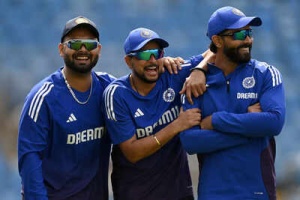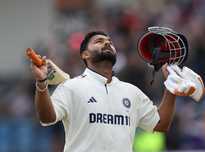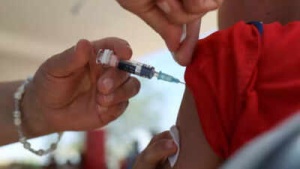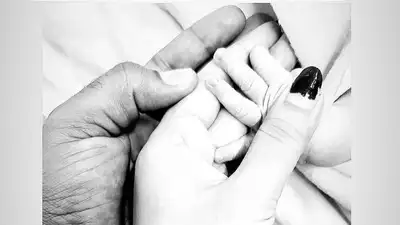Indian cricketer Suryakumar Yadav recently underwent surgery in Europe to address a sports hernia. The 34-year-old athlete shared an update on his Instagram account, stating, "Life Update: Underwent surgery for a sports hernia in the lower right abdomen. Grateful to share that after a smooth surgery, I’m already on the road to recovery. Can’t wait to be back." But what exactly is a sports hernia, and how does it differ from a regular hernia? Let's delve into the details.
A sports hernia, also known as athletic pubalgia, is a painful injury affecting the soft tissues in the lower abdomen or groin area. Unlike a traditional hernia, a sports hernia doesn't present as a visible bulge. Instead, it involves a tear or strain of muscles, tendons, or ligaments in the groin region, leading to persistent pain that intensifies with sudden movements.
Sports hernias commonly occur in athletes like Suryakumar Yadav, who participate in sports that demand sudden changes in direction, twisting motions, or intense forceful movements, such as batting in various shots or fielding.
The key difference between a sports hernia and a traditional inguinal hernia lies in the absence of a visible lump. In a traditional hernia, an organ or tissue protrudes through a weakened muscle, creating a noticeable bulge. However, a sports hernia involves a tear or weakness in the muscles or tendons without any outward signs.
Due to the absence of a bulge, sports hernias can be challenging to diagnose. However, they cause significant pain and discomfort, particularly during physical activity.
The primary symptom of a sports hernia is pain in the groin or lower abdomen. This pain can manifest suddenly at the time of injury or develop gradually over time due to repetitive movements. Key symptoms to watch out for include:

The pain associated with a sports hernia is often diffuse, making it difficult to pinpoint the exact location of the injury. The injury may also lead to stiffness and soreness after sports or exercise, hindering the ability to continue physical activity.
Sports hernias result from repetitive movements that strain the muscles and tendons in the lower abdomen and groin. The injury occurs when these soft tissues are stretched or torn due to sudden twisting of the pelvis.
Treatment for sports hernias varies depending on the severity of the injury. Available options include:
Avoiding activities that trigger pain, especially twisting and sudden movements, can facilitate tissue healing, although this process may be lengthy.

A structured rehabilitation program focuses on strengthening the abdominal and hip muscles, enhancing flexibility, and correcting muscle imbalances. Physical therapy is often the initial approach to treatment.
Nonsteroidal anti-inflammatory drugs (NSAIDs) can help alleviate pain and inflammation, although they do not address the underlying issue.
If symptoms persist despite conservative treatment, surgery may be necessary to repair the torn tissues. Surgical options involve repairing or reinforcing the damaged tendons and muscles around the pubic bone. Surgery typically results in a favorable recovery and a gradual return to sports activities.
Newer articles
 Gavaskar Calls for Kuldeep Yadav's Inclusion in Second Test Amid Bumrah Fitness Concerns, Cites Edgbaston Spin Advantage
Gavaskar Calls for Kuldeep Yadav's Inclusion in Second Test Amid Bumrah Fitness Concerns, Cites Edgbaston Spin Advantage
 Indian Astronaut Shukla Arrives at ISS, Ushering in New Era for Space Program
OR
India Celebrates as Shukla Reaches ISS, Advancing Ambitious Space Goals
Indian Astronaut Shukla Arrives at ISS, Ushering in New Era for Space Program
OR
India Celebrates as Shukla Reaches ISS, Advancing Ambitious Space Goals
 Rishabh Pant Revolutionizing Cricket, Says Greg Chappell
Rishabh Pant Revolutionizing Cricket, Says Greg Chappell
 Toxic Workplace Warning Signs: Spot the Red Flags Early
Toxic Workplace Warning Signs: Spot the Red Flags Early
 Global Immunization Crisis: Millions of Children at Risk as Vaccine Coverage Lags, Study Reveals
Global Immunization Crisis: Millions of Children at Risk as Vaccine Coverage Lags, Study Reveals
 Moto G54 Price Slashed in India: Check Out the Discounted Rates and Specs
Moto G54 Price Slashed in India: Check Out the Discounted Rates and Specs
 Indian Cricket Star Mukesh Kumar and Wife Divya Singh Announce the Arrival of Baby Boy
Indian Cricket Star Mukesh Kumar and Wife Divya Singh Announce the Arrival of Baby Boy
 IRCTC Launches AI Chatbot 'AskDisha 2.0' to Revolutionize Train Ticket Booking and Customer Service
IRCTC Launches AI Chatbot 'AskDisha 2.0' to Revolutionize Train Ticket Booking and Customer Service
 Cummins Lauds Australia's Dominant Start to WTC Campaign After West Indies Series Win
Cummins Lauds Australia's Dominant Start to WTC Campaign After West Indies Series Win
 Smith Targets Test Return After Innovative Baseball Cage Rehab in New York
Smith Targets Test Return After Innovative Baseball Cage Rehab in New York